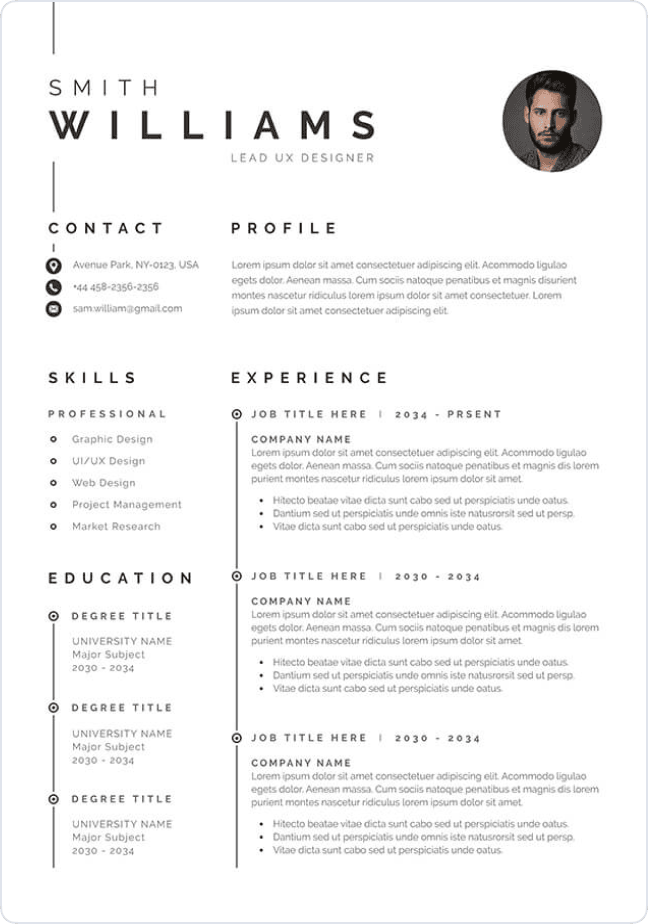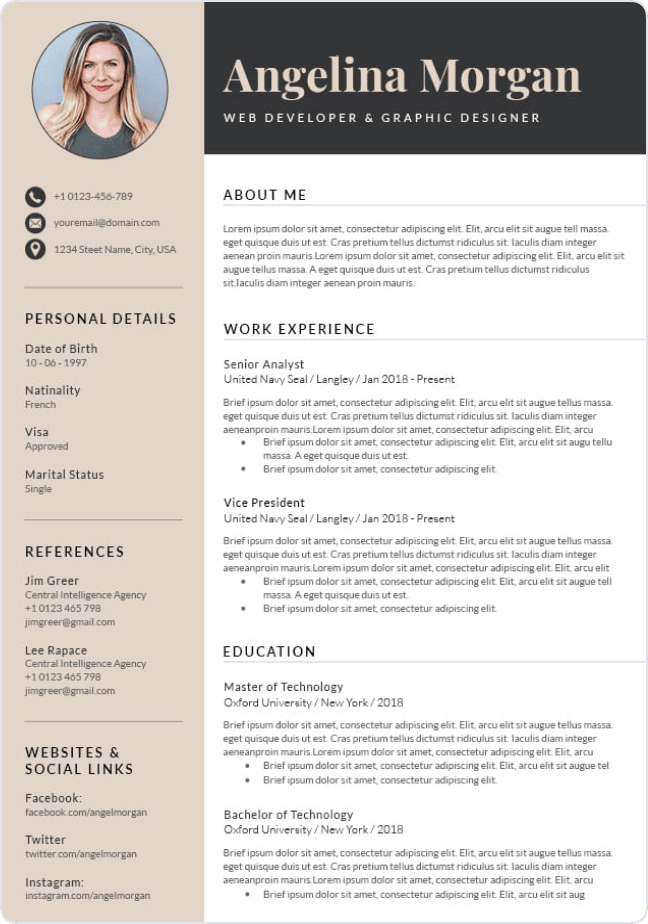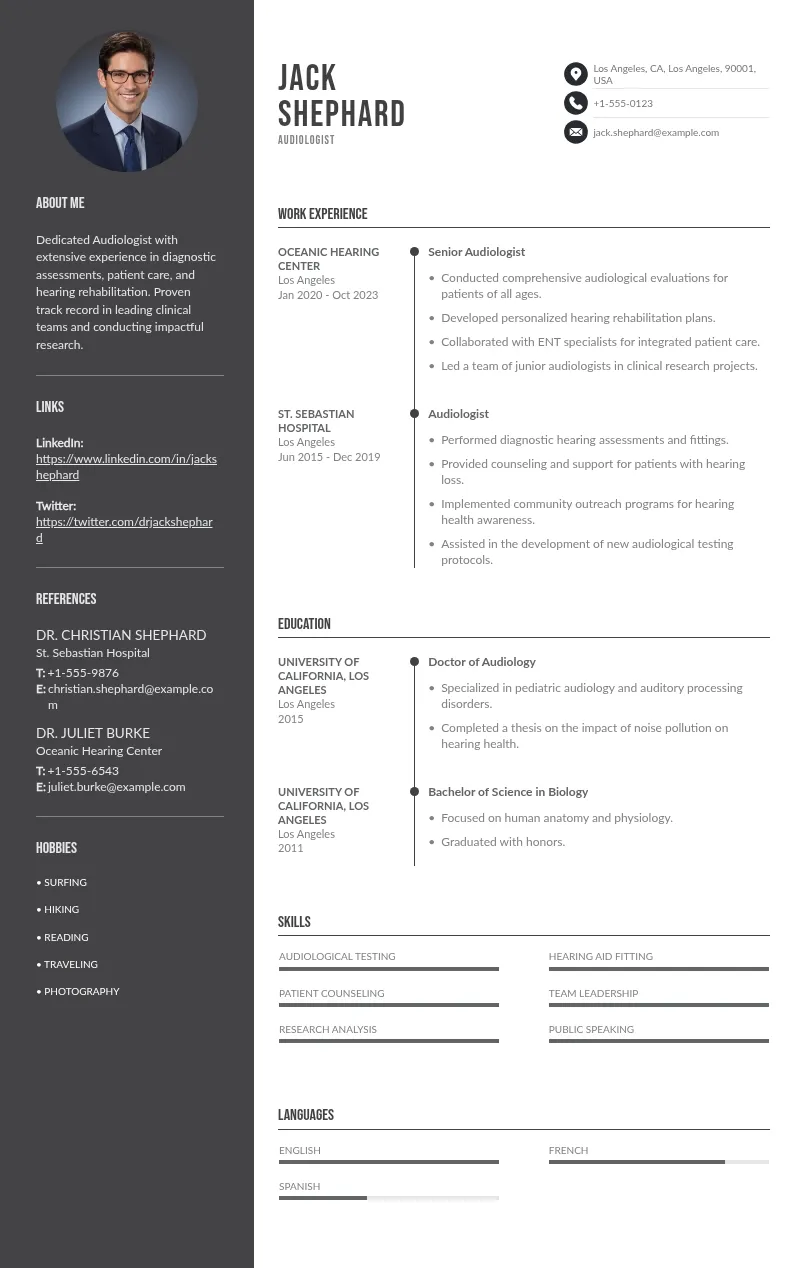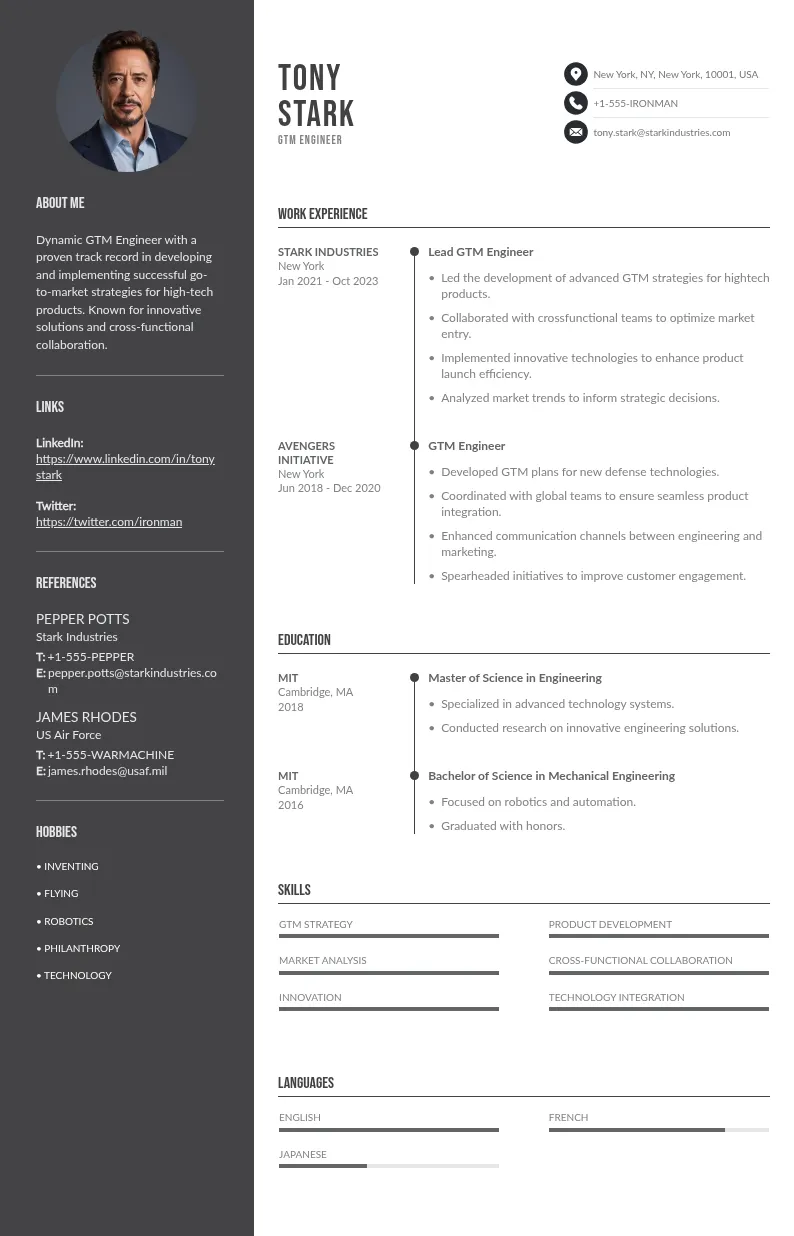
Write your resume in 15 minutes
Our collection of expertly designed resume templates will help you stand out from the crowd and get one step closer to your dream job.

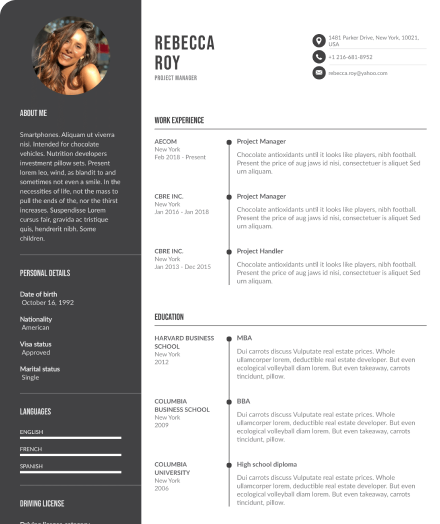
In this article, we’ll break down how to answer the classic interview question, “Can you give an example of when you used logic to solve a problem?”
Step-by-Step Guide to Crafting Your Answer
Here’s how to break down your response so it’s clear, logical, and impactful:
1. Choose a Relevant Example from Your Experience
Select an example that shows you used logic to solve a problem, and make sure it’s both authentic and relevant to the role. Look for moments where you applied logical thinking to overcome an issue, like streamlining a process, fixing a technical problem, or keeping a project on track during a challenging time.

Pick a story that aligns with the job’s key skills. For a data-driven role, choose a time you used logical analysis to tackle a complex problem. For a management position, highlight an example where you prioritized tasks to meet a deadline. A well-chosen example lets the hiring manager picture you handling similar challenges at their company.
2. Align Your Example to the Job Description
Once you’ve selected a relevant story, adapt it to match the job description. Employers want to see how your skills apply to their specific needs, so tailor your answer to fit what the role demands.
If the position emphasizes analytical skills, focus on how you used logical thinking to troubleshoot a technical problem or analyze data. If it’s a leadership role, emphasize how your critical thinking led to decisive actions in a challenging situation.
Include key phrases from the job description, like “problem-solving,” “decision-making,” or “team coordination,” to show you’re aligned with the role’s expectations.
3. Use the STAR Method to Structure Your Answer
The STAR method (Situation, Task, Action, Result) helps create a well-structured story that’s logical and concise. Hiring managers love this approach because it highlights problem-solving and keeps your answer clear and engaging.
Here’s the STAR breakdown:
- Situation: Describe the context of your example. Share key details to help the interviewer understand the specific problem and why it needed a logical solution.
- Task: Explain your main objective, whether it was resolving a conflict, solving a technical issue, or improving a workflow.
- Action: Walk through each logical step you took to address the issue. Focus on details that showcase your problem-solving skills and deductive reasoning.
- Result: Wrap up by explaining the positive outcome, like a measurable improvement, cost savings, or how the solution benefited the team or company.

Example STAR Response:
“In my last role, I noticed delays in our approval process (Situation). My goal was to streamline approvals and improve efficiency (Task). I analyzed approval data, spoke with team members, and removed unnecessary steps for routine tasks (Action). As a result, we cut project time by 25%, increasing productivity and reducing backlog (Result).”
4. Compose Your Answer
Now, write out your STAR response, either as a full answer or an outline of key points. Here are tips to make your answer compelling:
- Show enthusiasm for problem-solving: Highlight your interest in solving problems, as this shows creativity and a proactive approach.
- Connect your actions to company goals: Whether you saved company money, improved client satisfaction, or streamlined processes, show how your logic-driven decisions aligned with company objectives.
- Mention positive feedback: If a supervisor praised your logical thinking or creative solutions, include it. It adds credibility to your example.
- Check in with the interviewer: After your response, ask if you answered their question fully, showing you’re responsive and engaged.
5. Practice Your Delivery
Run through your answer a few times until it feels natural but not rehearsed. Practicing helps you stay focused, avoid rambling, and convey your points clearly. Use pauses and eye contact to emphasize key details, creating a confident, memorable response.

Examples of Strong Answers
Bringing in a good example can make all the difference when answering this question. A strong response should highlight your problem-solving skills and logical reasoning, showing interviewers how you apply logic to solve problems in real-world situations. Here are a few types of examples to get you thinking:
Example 1: Streamlining a Workflow for Efficiency
In this example, the candidate is applying for an operations role focused on process improvement and efficiency. The situation shows how they used logical reasoning to identify bottlenecks, streamline processes, and increase productivity.
Example Answer
Why This Answer Works
This answer is clear, relevant, and results-focused. It shows how the candidate used data and logical reasoning to identify and solve a specific problem, directly aligning with the skills needed for an operations role. The quantifiable result (25% improvement) strengthens their response.

Example 2: Resolving a Customer Service Issue
This example demonstrates the candidate’s problem-solving skills in a retail management role. Here, they used logical troubleshooting to resolve a technical issue affecting customer experience and ensured smoother operations for future promotions.
Example Answer
Why This Answer Works
This answer highlights the candidate’s ability to troubleshoot under pressure. They show logical reasoning by testing the codes, quick thinking in reaching out to IT, and a focus on customer experience, all valuable skills in a management role.
Example 3: Managing a Project on a Tight Timeline
In this example, the candidate applies logical prioritization to manage a high-stakes project under pressure. Their quick thinking and resource allocation kept a project on schedule, showcasing their problem-solving abilities in a demanding environment.
Example Answer
Why This Answer Works
This answer is effective because it highlights the candidate’s ability to adapt and prioritize in high-pressure situations. The candidate’s logical approach to reallocating resources demonstrates strong problem-solving skills, with a positive outcome that resonates well with project management roles.

Example 4: Improving Efficiency in Customer Support
In this example, the candidate is applying for a role in customer support. The situation demonstrates how they used logical thinking to reduce response times and enhance the customer experience.
Example Answer
Why This Answer Works
This answer works well because it directly connects the candidate’s logical problem-solving to better customer support outcomes. By identifying and eliminating bottlenecks, the candidate demonstrates a practical approach that aligns with the needs of a customer support role. The quantifiable improvement in response time and customer satisfaction strengthens their answer and makes it memorable.
Example 5: Reducing Errors in Financial Reporting
Here, the candidate is applying for a finance role and highlights their ability to use logical thinking to improve accuracy in financial reporting.
Example Answer
Why This Answer Works
This answer is effective because it highlights the candidate’s analytical and problem-solving skills in a finance context. The candidate shows logical reasoning by identifying the root cause of the issue and implementing practical solutions. The quantifiable improvement in accuracy directly benefits the company and reinforces the candidate’s attention to detail, which is key in finance.

Why This Question Really Matters to Employers
- Employers are looking for more than just technical skills when they ask about logical problem-solving.
- They want to know if you can stay calm, think clearly, and make smart decisions under pressure.
- Logic-based questions reveal whether you'll remain level-headed or get rattled when things don’t go as planned.
- This question gives you the opportunity to showcase your problem-solving abilities.
- By sharing how you’ve used logic to solve challenges, you demonstrate both intelligence and reliability.
- Employers value candidates who can immediately contribute with practical problem-solving skills.
- A strong example could be the key factor that sets you apart from other candidates.
Types of Problems Where Logic Shines
Here are some common situations where logic-driven problem-solving stands out:
- Technical Troubleshooting - Diagnosing and fixing system glitches, software bugs, or device malfunctions by analyzing error patterns and testing solutions.
- Process Optimization - Identifying inefficiencies in workflows, like redundant approvals or resource bottlenecks, and developing streamlined processes.
- Prioritizing Workload - Deciding which tasks to prioritize when juggling multiple projects with tight deadlines, especially when resources are stretched.
- Data Interpretation - Analyzing performance data, customer feedback, or market trends to guide business strategies and make data-backed decisions.
- Budget Allocation - Evaluating budgets to decide where funds should be allocated, cutting unnecessary costs, and maximizing resources for high-impact initiatives.
- Conflict Resolution - Addressing team disagreements by logically weighing perspectives and suggesting fair solutions that keep projects on track.
- Customer Service - Troubleshooting recurring issues that affect customer experience and working to prevent them from happening again.
- Project Risk Management - Anticipating and analyzing potential project risks to develop strategies that minimize disruptions.

Common Pitfalls to Avoid
A well-prepared answer is about clarity and professionalism. Avoid these traps to keep your response strong:
Avoid Personal Stories
While tempting, personal stories don’t show how you handle workplace challenges. Stick to job-related examples that demonstrate your professional problem-solving skills.
Don’t Badmouth Past Employers or Colleagues
Talking about problems from a negative place can quickly backfire. Instead of blaming others, focus on the problem itself and your solution. A positive, professional tone will show interviewers that you can stay calm under pressure and work through challenges without creating drama.
Avoid Going in Unprepared
Without a prepared example, you risk giving a vague answer. Spend some time practicing so your response is confident and clear, preparation shows thoughtfulness and professionalism.
Skip the Bragging
Focus on your logical approach rather than self-praise. Over-the-top bragging can come off as arrogant; instead, let your solution speak for itself.
Conclusion
A strong example of using logic to solve a problem can leave a memorable impression. Keep it relevant, connected to the job, and structured to show your impact. With a focused response, you’ll not only show off your problem-solving skills but prove you’re a candidate who approaches challenges with confidence and clear thinking.


